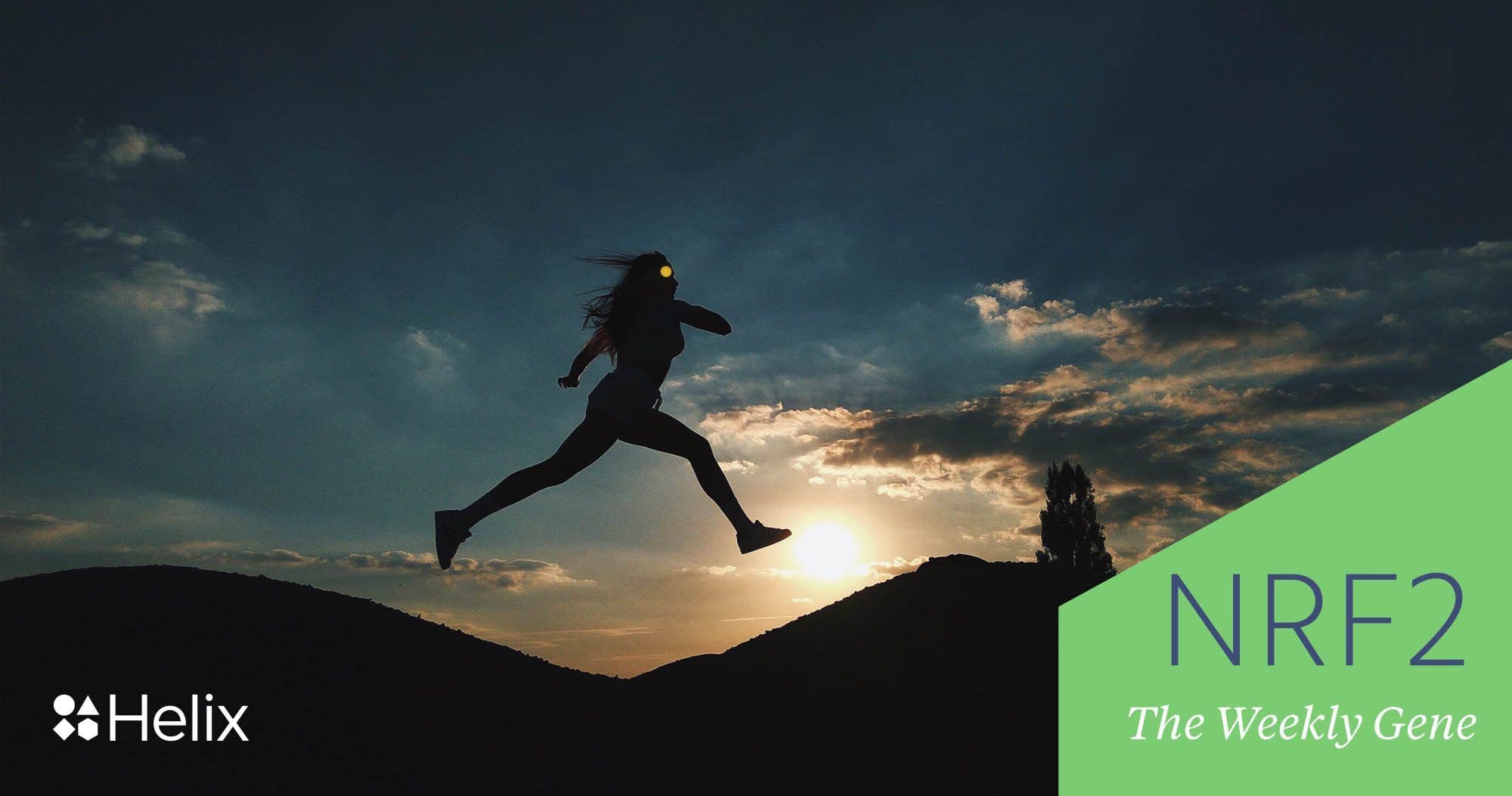When oxygen goes rogue inside your body, this gene helps stop it

Welcome to The Weekly Gene, a blog series brought to you by Helix that introduces a different human gene each week. We’ll share important facts, relevant research, and how these genes might be related to certain conditions and traits. It’s a great way to build your DNA vocabulary, learn more about the code that makes all of us unique, and find a path to the genetic insights that are important to you.
Want to know more about a specific gene? Let us know by tweeting @my_helix with #WeeklyGene.
“Feel the burn,” they said. “It’ll be fun!” they said.
Sometimes, it doesn’t feel that fun. Exercising can be really tough, and it turns out that it’s also tough on your cells. To ensure cells remain healthy during intense workouts, the body can enlist the help of many proteins that are coded in your DNA.
One of these proteins is Nuclear Erythroid 2-related factor 2 (NRF2), which is best known for its role in antioxidant signaling—a process by which potentially harmful oxygen molecules are neutralized. Some preliminary evidence also indicates it may contribute to elite athletic endurance.
Your body relies on oxygen to survive. The majority of oxygen that you breathe in will be transported to the cells of your body through blood vessels. Once in the cells, that oxygen is used to make energy in the form of adenosine triphosphate, better known as ATP. Without energy, cells aren’t able to function as they normally would and a lack of ATP eventually leads to cell death.
The process of making this energy is a dangerous one: in order to make ATP, the cell must first break apart a molecule that results in two highly reactive units of oxygen. These molecules are likely to collide with nearby proteins, fats, or DNA, which can be damaging and may result in DNA mutations or even cell death. As scary as that sounds, it’s actually a normal process and is only problematic if it goes unchecked. To prevent this from happening, your cells have developed complex mechanisms for controlling reactive oxygen species (ROS), including the activation of the NRF2 protein.

Your body relies on oxygen to survive
NRF2 is like a first responder to a chaotic scene. In response to high levels of ROS, NRF2 coordinates the production of an elaborate antioxidant defense system to neutralize these reactive molecules and even has the ability to trigger the activation of over 200 genes involved in this process. This protective quality of NRF2 is critical to our biology. Interestingly, recent studies have identified variations in the DNA sequence coding for NRF2 that may be correlated to human athleticism. These studies provide preliminary evidence that elite endurance athletes in sports like running1, soccer1, and rowing2 have a higher likelihood of carrying a variant in the NRF2 gene designated as the “G” variant. It’s not currently known how this change affects NRF2 function, but it has been suggested that exercise induces high levels of ROS in both skeletal and cardiac muscle. Because of this, it’s suggested that these cells rely on NRF2 to prevent ROS induced damage and maintain healthy heart and muscle function.
The role of NRF2 in human athletic performance is still being studied, but these early reports are exciting. There are numerous other genes suggested to contribute to athletic ability, too, but remember: genetics alone can’t make an athlete. There are many factors that influence your athletic abilities, including environment and life choices. That’s why products in the Helix Store like embodyDNA by Lose It! offer more than DNA testing—they also offer recommendations for workout and diet routines that may help you live a healthier lifestyle.
1Eynon, N., et al. “NRF2 intron 3 A/G polymorphism is associated with endurance athletes status.” Journal of Applied Physiology, vol. 107, no. 1, 2009, pp. 76–79., doi:10.1152/japplphysiol.00310.2009.
2Maciejewska-Karłowska, A. et al. “The GABPB1 Gene A/G Polymorphism in Polish Rowers.” Journal of Human Kinetics 31 (2012): 115–120. PMC. Web. 6 Sept. 2017.